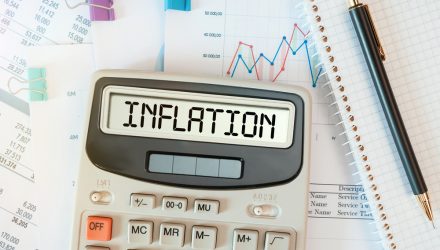Stubborn and sticky inflation is keeping yields elevated again while pushing down bond prices. Of course, this opens up pathways for traders to gain from falling bond prices via inverse exchange-traded funds (ETFs).
The Federal Reserve has been keen on keeping rates steady until it gets more confirmation that inflation is cooling. The most recent consumer price index (CPI) reading may have given the central bank more reasons to keep rates steady in the interim.
“The consumer price index, a broad-based measure of the prices shoppers face for goods and services across the economy, increased 0.3% for the month (of January), the Bureau of Labor Statistics reported,” CNBC reported. “On a 12-month basis, that came out to 3.1%, down from 3.4% in December.”
The bond markets have been witnessing record issuance as investors may be sensing that they better take advantage of yields now before rate cuts eventually happen. While the CPI did make an unexpected increase, the big picture reveals that inflation is at least rising at a temperate pace.
“Inflation is generally moving in the right direction,” said Lisa Sturtevant, chief economist at Bright MLS. “But it’s important to remember that a lower inflation rate does not mean that prices of most things are falling — rather, it simply means that prices are rising more slowly.”
Inverse Exposure to Bonds
In the meantime, if bond prices continue to push lower, bearish traders can use the Direxion Daily 20+ Yr Trsy Bear 3X ETF (TMV) and the Direxion Daily 7-10 Year Treasury Bear 3X Shares (TYO). TMV seeks daily investment results of 300% of the inverse daily performance of the ICE U.S. Treasury 20+ Year Bond Index, while TYD seeks 300% of the inverse daily performance of the ICE U.S. Treasury 7-10 Year Bond Index.
Both funds have been off to a good start this year, with TMV gaining over 20%, while TYO is up just over 10%. If the higher-for-longer narrative returns to the bond markets, these funds could remain bullish until the data-dependent Fed sees reason to start cutting rates. When that happens is anybody’s guess, and the Fed gave no indication on when, other than it will most likely be this year.
“Basically, we want to see more good data,” said Fed chair Jerome Powell. “It’s not that the data aren’t good enough. It’s that there’s really six months of data. We just want to see more good data along those lines. It doesn’t need to be better than what we’ve seen, or even as good. It just needs to be good. And so, we do expect to see that. And that’s why almost every single person on the Federal Open Market Committee believes that it will be appropriate for us to reduce interest rates this year.”
For more news, information, and analysis, visit the Leveraged & Inverse Channel.









